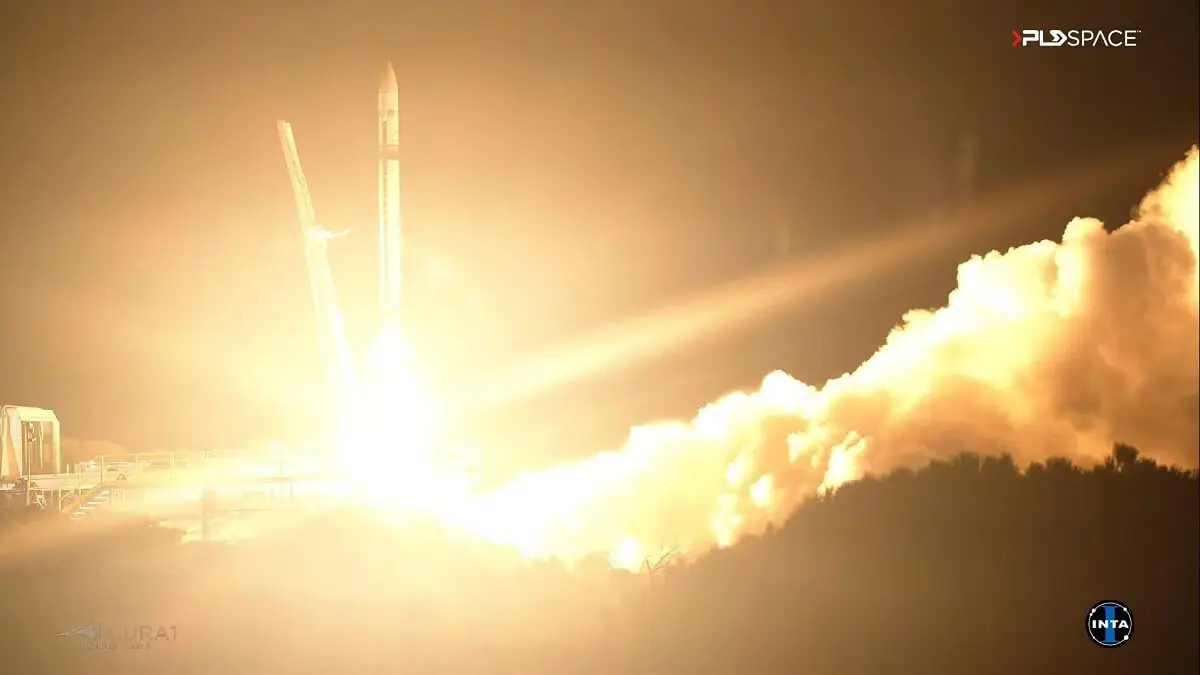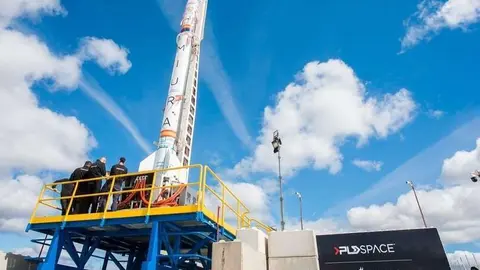Smoke from Miura 1's maiden flight must not blind PLD's eyes

Praise, accolades, congratulations and applause have been showered on the Spanish company PLD Space, its excited and now euphoric team of professionals and its two founders, Raúl Torres and Raúl Verdú, for the result of the maiden flight of the Miura 1 micro-launcher.
I have been in contact for many years with the two Raules, as they are colloquially known in the national space sector, and I have had the opportunity to speak personally with both of them on numerous occasions. I have visited PLD's headquarters in the Parque Empresarial de Elche, just 20 kilometres from Alicante, witnessed first-hand the beginnings of the manufacture of the Miura 1 when it was still called Arion 1, and followed the evolution of the programme.
I join in the congratulations for the successful launch and ascent of the Miura 1 suborbital rocket, a transcendental step that opens the way to validate much of the design and technology for the full development of the future Miura 5 launcher. That is the ultimate goal of the company from Elche: to develop a recoverable micro launcher with two propulsion stages, with five engines in the first and two in the second, with the capacity to place satellites of up to 300 kilos around the Earth in orbit.

The great merit of Raúl Torres, Raúl Verdú and their team is that they have made what was originally intended to be an entirely Spanish sounding rocket a reality, renamed it an experimental launcher and managed to test it with a high degree of success. The key lies in its Teprel-B liquid propulsion rocket engine, which is the cornerstone on which the company's great technological and economic efforts have been based.
The Miura 1 fired in the early hours of Saturday morning, 7 October, from the Médano del Loro firing range, attached to the El Arenosillo Experimentation Centre -on the coast of Huelva- of the National Institute for Aerospace Technology (INTA) is a technological demonstrator, the overall result of which would be a partial success. This is what usually happens with the qualification missions of first-time launchers, and it is also the opinion of several national experts consulted, as well as my own.
But the most important thing is that Miura 1 has more than overcome the serious threat that always hovers around any test of a new space vector: preventing it from exploding at the very moment of liftoff... or poofing during its ascent phase.

A partial success
One mishap or another is what happened to the new Japanese H-3 rocket on its maiden flight on 7 March, to the American Centaur V during its test flight on 27 March and, on several occasions, to the powerful Starship with which Elon Musk wants to reach the Moon.
The first Ariane 5 - the powerful workhorse of the European Space Agency (ESA) - also went poof when it took off on 4 June 1996 from French Guiana, a disaster I witnessed live. And this despite ESA's vast experience in developing large launchers and operating hundreds of them.
Successive improvements have meant that Ariane 5 has been in service for almost 30 years - until July this year - with only two failures and three partial disappointments out of a total of 117 firings. This will not be the case for the Miura 1. PLD started its entrepreneurial journey in 2011 from scratch, so the single-stage Miura 1 is a necessary stepping stone to take on the Miura 5, which is much larger in size and thrust than its smaller sibling.

What milestones can be attributed to the Miura 1 and PLD? Let's take a brief look. The Miura 1 is the first launcher designed, developed and manufactured by a private Spanish company. It was the first to be launched from Spanish soil and the first to be propelled by a liquid rocket engine of Spanish origin (Teprel B). But it is not the first recoverable rocket to be launched in flight in Europe, no matter how much the Huelva City Council may highlight it. At least in Norway and Sweden it has been happening for years.
PLD and its technicians must be very satisfied with the fact that the flight has not had any serious mishap and for having carried out the project with very limited official aid and the financing of companies that have trusted in the tenacity of the Raules. The company points out that it has achieved this with 65 million euros, which is insignificant if we take into account the significant government aid received by European companies with similar projects.
The Miura 1 mission cannot be described as "round", as is usual for the first tests of a new launcher, be it orbital or suborbital. However, PLD's official communiqué immediately after the launch on 7 October describes the Miura 1 flight as a "success". But not everything went according to plan, according to the initial flight data released by PLD.

A 46-kilometre high suborbital flight
Some important parameters of the Miura 1 flight did not correspond to the mission forecasts. PLD confirmed on 3 October that Miura 1 was to "reach a maximum altitude - apogee - of 80 kilometres" and that the flight was to have a duration of 12 minutes, i.e. 720 seconds.
However, the information released by the company shortly after the end of the mission shows that it fell short of the targets set. The maximum altitude reached by Miura 1 was 46 kilometres and the launcher remained in flight for 306 seconds. In short, Miura 1 covered 57.5 per cent of its planned altitude and remained in the atmosphere for only 42.5 per cent of its planned time.
I am convinced that neither the Raules nor those involved in the project are going to be dazzled by the exaggerated praise lavished by much of the Spanish media and some national authorities. They convey the idea that, overnight, Spain and PLD have become the champions of the global space sector.
El lanzamiento del Miura 1, primer cohete 100% tecnología española, ha sido un éxito.
— Pedro Sánchez (@sanchezcastejon) October 7, 2023
Un hito que posiciona la I+D+i de España a la vanguardia del transporte espacial.
Enhorabuena, @PLD_Space, por contribuir a construir la mejor España. pic.twitter.com/HuXmjlp3Sk
For example, the Twitter congratulations of the acting Prime Minister, Pedro Sánchez, do not correspond to reality. He describes the flight of the Miura 1 as "a milestone that positions Spanish R&D&I at the forefront of space transport". An exaggerated, bombastic and misplaced statement. It is clear that Spain has not positioned itself at the forefront of anything, much less in space transport.
Nor is it reasonable to state, as the PLD communiqué of 7 October states, that with the launch of the Miura 1, "Spain becomes the tenth country in the world with direct space capability". Simply because the Miura 1 has completed a sub-orbital mission, has reached a distance of 46 kilometres and has fallen far short of 100 kilometres, the imaginary line recognised by the International Astronautical Federation where outer space begins.
PLD practices self-promotion when it claims that the Miura 1 "strengthens PLD Space's leading position in the global space race". Or when it claims that the company "generates a national and European strategic capability". This will be proven when the future Miura 5 becomes a reality and fulfils the expectations that have been placed in it.

PLD points out that its inaugural take-off "will be in 2025, to begin commercial activity in 2026". But the technological leap from Miura 1 to 5 is tremendous. The Raules are not lacking in tenacity, nor are they lacking a highly committed technical team. But it is very, very, very difficult to see the Miura 5 taking off in just over two years.
In my opinion, the famous 1933 song with the original title "Smoke gets in your eyes", made famous by the Platters in 1959 and still a timeless melodic gem, must be avoided at all costs. Enjoy it!



